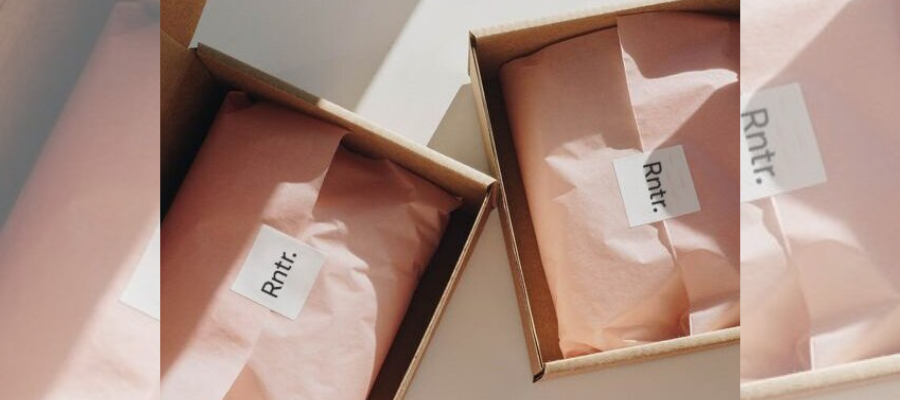Whether it’s Gucci pledging to become carbon neutral, outrage over high fashion brands burning unsold stock or extinction rebellion protesting London fashion week, sustainability is THE topic of the moment in fashion.
There has been a clear shift in consumer trends and buying behaviour, with millennials leading the way. Customers are making more conscious decisions when it comes to sustainability, ethical production and shopping with purpose, placing increasing pressure on brands to do better.
Firstly, in order to understand why ethical fashion is a topic of conversation and action, we need to understand its antithesis, fast fashion.
WHAT IS FAST FASHION?
Fast fashion is defined as ‘an approach to the design, creation, and marketing of clothing fashions that emphasises making fashion trends quickly and cheaply available to consumers’.
Traditionally designers created garments on a two-season a year basis. Autumn/Winter and Spring Summer. This allows for the designed to bring to life new styles and trends and allows consumers the time to warm up to it. In contrast, fast fashion has 52 micro seasons a year and it’s not uncommon to have multiple new drops of clothing per week.
Rather than creating a style or trend, they usually recreate trends from revered designers and celebrity culture. H&M and Forever 21 both get daily shipments of new styles, while Topshop introduces 400 new styles a week. Fast fashion brands oversaturate the market making consumers feel that they are immediately behind in a trend as soon as it hits shelves. A ‘buy now or miss out’ culture is created which ensures consumers never get tired of the same stock in a store and buy many more garments than they actually need.
ETHICAL ISSUES
Pressure from fast fashion brands to create clothing quickly and cheaply leads to manufacturers cutting corners, often with workers taking on increasingly long hours for low wages in buildings not kept up to code. Disasters connected with fast fashion manufacturers have cost lives with one of the most deadly cases in 2013, at Rana Plaza in Bangladesh. After warnings the building was unsafe to work in only a day prior, The Rana Plaza, Bangladesh collapsed, with over 3,000 people inside. 1,134 people died, and over 2,500 were injured. The Rana Plaza contained multiple garment factories manufacturing for the likes of Zara, Mango, Primark and Walmart.
Confused as to why fast fashion retailers aren’t held accountable? There’s a few key reasons, the most obvious is that workers rights in developing countries are virtually non-existent. The other reason is that retailers won’t usually own the factories and, instead, only contract them which means that they can’t be held accountable.
The workers who make fast fashion garments are very skilled, however for the majority, wages don’t reflect that.
Jenna Flood, ASI stylist and ethical fashion blogger says “in places like Bangladesh and Vietnam, there are less laws around what a living wage is, so brands can squeeze their factories to produce more garments with a lower cost to the workers, all the while earning profit.”
A report by Oxfam called ‘What She Makes’ found that women garment workers were being paid less than 37cents an hour and a 1% increase in the price of a garment could mean a fair living wage would be paid.
While it may feel like we’re laying it on heavy, we think it’s important for us all to understand where garments come from in order to make informed choices. It’s our wardrobes, our planet, our future.
ENVIRONMENTAL IMPACT
On top of the ethical questions that come along with fast fashion, there is the environmental footprint it is leaving behind. The fashion industry accounts for 2% of global GDD but is also the second-largest polluter behind the Oil industry. Much of the pollution caused by the fashion industry, which grew by 9.7% between 2010 and 2015, has fast fashion to blame.
Globally we are now consuming 80 billion new pieces of clothing every year—400% more than we were consuming just two decades ago. Australia is one of the biggest contributors to fashion pollution, now only second to the US. We send 85% of the textiles we buy to landfill every year equalling up to about 27 Kilograms of new textiles per person per annum.
The fashion industry uses masses of freshwater and energy to produce goods, and the dwindling resource emits huge quantities of greenhouse gasses. Synthetic fibres, a favourite of fast fashion brands, are made from petroleum, meaning it can take up to a thousand years to biodegrade. A thousand years! Petroleum-based fibres like polyester, nylon and acrylic also release plastic microfibers into the water. A 2011 study noted a single synthetic garment can create upwards of 1900 microfibres from one machine cycle which is then consumed by sea life. This does not only affect marine life but also affects those of us who eat fish because we are ingesting the same fibres that the fish ingest.
As well as using an exorbitant amount of water, the fashion industry also pollutes it. In developing countries (where most of fast fashion is produced), 90% of textile wastewaters are dumped directly into rivers, untreated. Wastewater from textiles contains toxic substances such as lead, mercury, and arsenic. This is harmful to wildlife, the millions on millions of people who live in the surrounding areas, and finally globally when contaminated waters reach the sea.

WHAT NOW?
The Global Fashion Agenda Pulse Report shows that in 2019, 75% of consumers viewed sustainability in fashion as important or extremely important, with mentions of sustainability on social media increasing a third faster than overall social media growth in 2015 and 2018.
According to Jenna Flood, society’s attitude towards Sustainable Fashion will not only continue to grow and change for the positive, but will also become a necessary requirement for brands and consumers in the future of fashion.
“It’s ultimately up to each individual to find a way to be more sustainable and link their purchasing power to a value they feel aligned with.
Whether their values are veganism, buying locally, transparent supply chains or preloved clothing, there are countless ways of embracing Sustainable Fashion. Start with a small change and watch grow into an everyday, impactful habit.”
Want to learn more about how to style sustainably? Check out our fashion styling courses at Australian Style Institute.
Bronte McCallum.


























